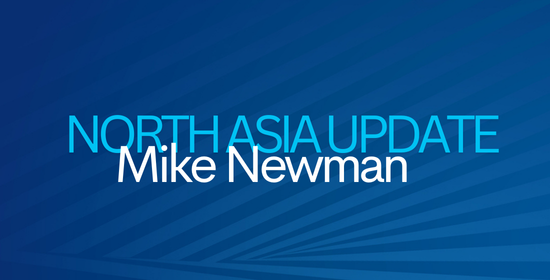Finally! The Dam has burst.
This month, The Hon Minister Anoulack Chanthivong MP, DCCEEW Secretary Anthony Lean, Investment NSW CEO Rebecca McPhee and other NSW Government delegates made a trade mission to Japan and Korea.
Without sounding like a broken record, after repeated requests during and after my term as STIC North Asia, we finally have senior political & departmental engagement in market. There are only positives to take away from this but my message remains the same – they must sustain the momentum and make it a regular schedule if they truly wish to capitalise. The last visit to Japan & Korea was then Premier Dom Perrottet back in July 2022. We can’t make it every 3 years. Especially now.
Why is this more important than ever? Simple. For sectors that are critical to the Hunter and more broadly, NSW, the clean energy journey is ours for the taking.
This month, the Queensland Government has closed down its hydrogen team and with the slowing momentum in South Australia, there will be question marks about its viability.
Having met most of the Japanese and Korean supply chain in clean energy this month, the fallout from Queensland’s termination of the $1 billion request from Stanwell to progress the Gladstone based CQH2 project (Iwatani, Kansai Electric, Marubeni, Sumitomo) has really shocked the Japanese. Furthermore, they were more incensed that Premier Crisafulli and team did not meet with them or the Japanese ambassador to discuss the unfortunate outcome.
JBIC also conveyed its frustration of unpredictable policy settings. That said, METI has Australia as Tier 2 and with no real projects on the horizon (in their view), CfD funding is not available. Having said that, if we bring forward a sensible proposal, that can change. As we know, the Hunter is the only site in Australia that has a chance of execution. The North Asians concede the journey for hydrogen is going to be longer than expected. Supply chain realities are there. Kawasaki Heavy, which left the Victorian HESC project, is struggling to find a commercial price for its liquid H2 carriers which are three times the cost of conventional ships with similar payload.
Which comes back to why NSW has a Stephen Bradbury opportunity. With projects collapsing around the country, trust out of North Asia is low. In my conversation with NSW Government while in market, I made it patently clear that never was there a better opportunity to level up the engagement with the Japanese (and Koreans). They are hurt. NSW is no longer invisible to the market. Now is the perfect time to reset the narrative on NSW and Australia.
Although we must realise our speed and approach to policy will have profound effects on the outcome. While there is some relief in Japan that we got a majority federal government, the hope is this can translate into predictable policy. One expects that the Hon Minister Chris Bowen MP’s team will need to refine the ARENA funding to capture a clean energy export opportunity which one would imagine leaves the Hunter and Port of Newcastle in a good position. NSW also has an important part to play in deploying a large part of our funding directly toward one or two projects. By doing so the domestic industry gets to piggyback of the large-scale export opportunity.
DSEI Japan- Tim Owen AM JP has been flying the flag for Hunter Defence in Tokyo this week. If we want a true reflection of Japan’s precarious defence situation, look no further than the 11,200 scrambles made by the Japan Air Self Defence Force to intercept Russian and Chinese military aircraft encroaching on its sovereign territory since 2010. China and Russia have also started conducting joint reconnaissance drills since 2019.
The engagement has been very good between Japan and Australia on defence and the story remains the same – Japan wants reliable partners in the defence realm to do three things:
- Enhance capabilities
- Learn international procurement best practice.
- Ensure mutual national security with countries that share their values
AmpControl – Congratulations on a fine knock, Rod. – Finally, a shout out to outgoing AmpControl CEO Rod Henderson who has been such an asset to the Japanese and Korean relationship and such an advocate for the Hunter. I am certain his legacy will continue on within the group’s long term success in North Asia.







